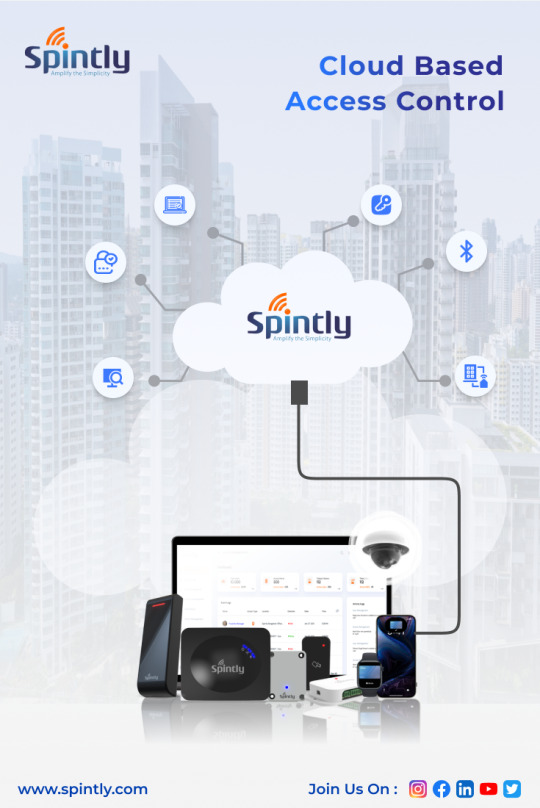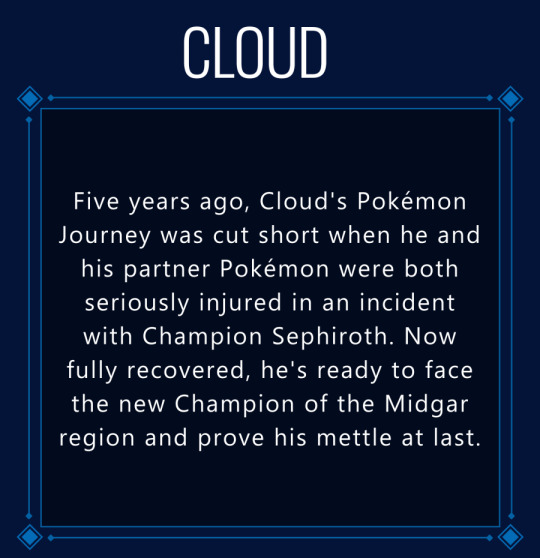#cloud based access control system
Explore tagged Tumblr posts
Text
Why Cloud-Based Access Control Is the Smartest Security Investment in 2025
As 2025 unfolds, physical security is no longer just about locked doors and ID cards. Organizations are embracing smart, agile technologies that align with modern work models, cybersecurity demands, and user expectations. One solution rising above the rest is cloud based access control. This approach offers more than just convenience - it delivers a strategic edge for businesses prioritizing flexibility, scalability, and resilience.
While many enterprises still rely on legacy systems that demand on-site servers and manual updates, the shift to cloud-powered access systems is accelerating. Solutions like Spintly are leading this evolution by offering seamless, scalable, and secure platforms tailored for forward-thinking organizations.

The Limitations of Traditional Access Control
Conventional access control systems, though once innovative, are now proving to be rigid and outdated. They require:
Physical server infrastructure
Manual software updates
On-premise IT support
High setup and maintenance costs
This creates limitations in terms of remote access, real-time visibility, and scalability - especially for growing businesses or companies operating across multiple locations.
What Is Cloud Based Access Control?
Cloud based access control moves access management functions—credential management, permissioning, reporting, and monitoring - to the cloud. Authorized personnel can manage access rights via a secure web interface or mobile app, eliminating the need for bulky hardware or complex IT intervention.
These systems leverage internet connectivity to communicate between access points (like smart locks or biometric readers) and centralized cloud servers. The result? Real-time data, seamless control, and enhanced security - accessible from anywhere.
Key Benefits of Cloud Based Access Control
1. Remote Management Across Locations
With remote work and distributed teams becoming standard, security administrators need the flexibility to manage access from anywhere. Cloud platforms allow them to:
Grant or revoke access in real time
Monitor who is entering or exiting
Receive alerts instantly
Manage multiple buildings or campuses from a single dashboard
Whether it's a facility in Mumbai or a satellite office in Bengaluru, companies using platforms like Spintly can centralize control with ease.
2. Scalability for Growing Businesses
As businesses expand, their security needs become more complex. A cloud based access control system scales effortlessly - new users, new doors, or even new branches can be added without major infrastructure changes. No need to install servers or hire local IT teams. Everything is managed centrally and updated instantly.
This flexibility is ideal for growing enterprises, co-working spaces, educational institutions, and multi-tenant buildings.
3. Reduced Hardware and Maintenance Costs
On-premise systems require regular maintenance, including hardware updates, data backups, and system repairs. Cloud based solutions reduce or eliminate these costs. Updates are automated, data is securely stored in the cloud, and hardware requirements are minimal.
Solutions like Spintly offer a cost-effective approach by removing dependence on complex server setups and minimizing ongoing maintenance.
4. Real-Time Access Logs and Data Analytics
Modern access control isn't just about entry and exit - it’s about intelligence. Cloud systems offer:
Live access logs
Visual dashboards
Predictive analytics
Customizable reports
This information is invaluable for audits, compliance, and understanding user behavior. Facility managers can make data-driven decisions to optimize traffic flow and reduce risks.
5. Improved User Experience
With mobile-first capabilities, cloud systems enable users to open doors using their smartphones no more fumbling with keycards or remembering PINs. For guests or contractors, temporary access credentials can be sent directly to their phones.
This enhances convenience and hygiene, especially in a post-pandemic world where contactless solutions are a priority.
Cloud Security: Is It Safe?
Understandably, businesses may have concerns about moving critical security infrastructure to the cloud. However, most cloud based access control providers use:
End-to-end encryption
Multi-factor authentication
Frequent security updates
GDPR and ISO-compliant data policies
These measures ensure data privacy and system integrity. In many cases, cloud systems offer better security than traditional on-premise setups vulnerable to outdated patches or limited oversight.
Cloud Based Access Control in Action
Let’s consider a growing mid-sized tech company in India with 5 regional offices. Their traditional access system required on-site support in each location, which created inefficiencies and high costs.
By switching to a cloud based access control solution from Spintly, they centralized access permissions, eliminated physical key management, and empowered administrators to monitor all locations from one dashboard. Mobile credentials replaced physical cards, improving both user experience and hygiene.
The IT team now spends less time on routine access tasks, and employees appreciate the streamlined entry process. The cost savings and operational efficiencies made a compelling case for cloud adoption.
Future-Proofing Your Security Investment
Technology is evolving rapidly. Investing in a system that can adapt is crucial. Cloud based access control platforms are regularly updated with:
New integrations (e.g., visitor management systems, video surveillance)
Biometric compatibility
Advanced analytics tools
AI-driven threat detection
These features allow organizations to keep pace with both security threats and user expectations without recurring hardware upgrades.
Why Spintly?
While many providers offer cloud solutions, Spintly stands out with a platform designed specifically for modern enterprises. Their system is:
Fully cloud native
Mobile-first and contactless
Easy to deploy and scale
Backed by strong encryption and compliance standards
Spintly combines sleek design with powerful backend architecture, offering a seamless balance of user experience and robust control. Whether you manage a co-working space, educational institution, or corporate facility, Spintly provides the devices to modernize your access strategy - without the complexity.
Conclusion
In 2025, the smartest security investments are those that align with agility, efficiency, and user convenience. Cloud based access control checks all the right boxes - enabling secure access from anywhere, integrating with other building systems, and providing real-time insights for better decision-making.
As more organizations recognize the limitations of legacy systems, the shift toward cloud access is no longer a matter of “if,” but “when.” For those ready to make the switch, trusted platforms like Spintly are paving the way with technology that is not only reliable but designed for the modern workplace.
#cloudbasedsolutions#cloud based software#accesscontrol#mobile access#access control solutions#access control system#spintly#smartbuilding#biometrics#smartacess#visitor management system#biometric attendance
0 notes
Text
Smart Parking Management Software | Parkomax Streamline your parking operations with Parkomax's advanced parking management software. Real-time monitoring, automated access, and seamless reporting in one platform.
#Parking Management Software#Smart Parking System#Automated Parking Software#Parking Control System#Parking Lot Management Software#Cloud-based Parking Software#Parking Garage Management System#Parking Access Control#Parking Operations Software#Digital Parking Solutions#Parkomax parking software#IoT-enabled parking system#Parking analytics and reporting tool#Multi-location parking management solution#Parking ticketing and billing automation
0 notes
Text
#Accounting Software In Dubai#Best Accounting Software In UAE#IT Infrastructure Services In Dubai#IT Services In Dubai#Managed IT Service Providers In Dubai#IT Support Companies In Dubai#IT Networking Solutions Company Dubai#Access Control System Suppliers In Dubai#Firewall Installation Services In Dubai#Accounting Software For Small Business In Dubai#Best Accounting Software Solutions In Dubai#Best Accounting Software For Medium Business In Dubai#Cheap Accounting Software For Small Business In Dubai#Best Cloud Based Accounting Software In Dubai#Best Low Cost Accounting Software For Small Business In Dubai#Best Accounting Software For Small To Medium Business In Dubai#Best Business Accounting Software Services In Dubai#Best Software Company In Dubai#Web Designing Services In Dubai#Best SEO Services In Dubai#Top HRMS Software In Abu Dhabi#Best ERP Solution Provider UAE#Best Project Management Software In Dubai#Fitness and Gym Management Software In Dubai#MEP Contracting ERP Software In Dubai#Best ERP Software For Metal Fabrication Industry In Dubai
0 notes
Text
Axolt: Modern ERP and Inventory Software Built on Salesforce
Today’s businesses operate in a fast-paced, data-driven environment where efficiency, accuracy, and agility are key to staying competitive. Legacy systems and disconnected software tools can no longer meet the evolving demands of modern enterprises. That’s why companies across industries are turning to Axolt, a next-generation solution offering intelligent inventory software and a full-fledged ERP on Salesforce.
Axolt is a unified, cloud-based ERP system built natively on the Salesforce platform. It provides a modular, scalable framework that allows organizations to manage operations from inventory and logistics to finance, manufacturing, and compliance—all in one place.
Where most ERPs are either too rigid or require costly integrations, Axolt is designed for flexibility. It empowers teams with real-time data, reduces manual work, and improves cross-functional collaboration. With Salesforce as the foundation, users benefit from enterprise-grade security, automation, and mobile access without needing separate platforms for CRM and ERP.
Smarter Inventory Software Inventory is at the heart of operational performance. Poor inventory control can result in stockouts, over-purchasing, and missed opportunities. Axolt’s built-in inventory software addresses these issues by providing real-time visibility into stock levels, warehouse locations, and product movement.
Whether managing serialized products, batches, or kits, the system tracks every item with precision. It supports barcode scanning, lot and serial traceability, expiry tracking, and multi-warehouse inventory—all from a central dashboard.
Unlike traditional inventory tools, Axolt integrates directly with Salesforce CRM. This means your sales and service teams always have accurate availability information, enabling faster order processing and better customer communication.
A Complete Salesforce ERP Axolt isn’t just inventory software—it’s a full Salesforce ERP suite tailored for businesses that want more from their operations. Finance teams can automate billing cycles, reconcile payments, and manage cash flows with built-in modules for accounts receivable and payable. Manufacturing teams can plan production, allocate work orders, and track costs across every stage.
86 notes
·
View notes
Text
US Treasury Department and White House officials have repeatedly denied that technologists associated with Elon Musk’s so-called Department of Government Efficiency (DOGE) had the ability to rewrite the code of the payment system through which the vast majority of federal spending flows. WIRED reporting shows, however, that at the time these statements were made, a DOGE operative did in fact have write access. Not only that, but sources tell WIRED that at least one note was added to Treasury records indicating that he no longer had write access before senior IT staff stated it was actually rescinded.
Marko Elez, a 25-year-old DOGE technologist, was recently installed at the Treasury Department as a special government employee. One of a number of young men identified by WIRED who have little to no government experience but are currently associated with DOGE, Elez previously worked for SpaceX, Musk’s space company, and X, Musk’s social media company. Elez resigned Thursday after The Wall Street Journal inquired about his connections to “a deleted social-media account that advocated for racism and eugenics.”
As WIRED has reported, Elez was granted privileges including the ability to not just read but write code on two of the most sensitive systems in the US government: the Payment Automation Manager (PAM) and Secure Payment System (SPS) at the Bureau of the Fiscal Service (BFS), an agency that according to Treasury records paid out $5.45 trillion in fiscal year 2024. Reporting from Talking Points Memo confirmed that Treasury employees were concerned that Elez had already made “extensive changes” to code within the Treasury system. The payments processed by BFS include federal tax returns, Social Security benefits, Supplemental Security Income benefits, and veteran’s pay.
Over the last week, the nuts and bolts of DOGE’s access to the Treasury has been at the center of an escalating crisis.
On January 31, David Lebryk, the most senior career civil servant in the Treasury, announced he would retire; he had been placed on administrative leave after refusing to give Musk’s DOGE team access to the federal payment system. The next morning, sources tell WIRED, Elez was granted read and write access to PAM and SPS.
On February 3, Politico reported that Treasury Secretary Scott Bessent told Republican lawmakers in the House Financial Services Committee that Musk and DOGE didn’t have control over key Treasury systems. The same day, The New York Times reported that Karoline Leavitt, the White House press secretary, said that DOGE’s access was “read-only.”
The significance of this is that the ability to alter the code on these systems would in theory give a DOGE technologist—and, by extension, Musk, President Donald Trump, or other actors—the capability to, among other things, illegally cut off Congressionally authorized payments to specific individuals or entities. (CNN reported on Thursday that Musk associates had demanded that Treasury pause authorized payments to USAID, precipitating Lebryk’s resignation.)
On February 4, WIRED reported that Elez did, in fact, have admin access to PAM and SPS. Talking Points Memo reported later that day that Elez had “made extensive changes to the code base for these critical payment systems.” In a letter that same day that did not mention Musk or DOGE, Treasury official Jonathan Blum wrote to Senator Ron Wyden of Oregon, “Currently, Treasury staff members working with Tom Krause, a Treasury employee, will have read-only to the coded data of the Fiscal Service’s payment systems.” (Krause is the top DOGE operative at Treasury and CEO of Cloud Software Group.) The letter did not say what kind of access the staff members actually had.
Sources tell WIRED that by afternoon of the next day, February 5, Elez’s access had been changed to “read-only” from both read and code-writing privileges.
That same day, a federal judge granted an order to temporarily restrict DOGE staffers from accessing and changing Treasury payment system information, following a lawsuit alleging the Treasury Department provided “Elon Musk or other individuals associated with DOGE” with access to the payment systems, and that this access violated federal privacy laws. The order specifically provided a carve-out for two individuals: Krause and Elez. At a court hearing later that day, Department of Justice lawyer Bradley Humphreys asserted that the order said their access would be “read-only.”
“It’s a distinction without a difference,” a source told WIRED. Referring specifically to the PAM, through which $4.7 trillion flowed in fiscal year 2024, they said Elez should not have had “access to this almost $5 trillion payment flow, even if it’s ‘read-only.’ None of this should be happening.”
The Treasury Department did not immediately respond to a request for comment. Elez did not immediately respond to a request for comment. The White House and Musk did not immediately respond to requests for comment.
“People will be held accountable for the crimes they’re committing in this coup attempt,” Wyden tells WIRED. “I’m not letting up on my investigation of what these Musk hatchet men are up to.”
56 notes
·
View notes
Text
The main reason to use Firefox and Linux and other free and open source software is that otherwise the big tech monopolies will fuck you as the customer over in search of profits. They will seek to control how you use their products and sell your data. When a company dominates the market, things can only get worse for ordinary people.
Like take Google Chrome for example, which together with its chromium reskins dominate the web browser market. Google makes a lot of money from ads, and consequently the company hates adblockers. They already are planning to move to manifest V3, which will nerf adblockers significantly. The manifest V3 compatible chrome version of Ublock Orgin is a "Lite" version for a reason. Ublock's Github page has an entire page explaining why the addon works best in Firefox.
And Google as we speak are trying to block adblockers from working on Youtube, If you want to continue blocking Youtube ads, and since Youtube ads make the site unuseable you ought to want that, it makes the most sense to not use a browser controlled by Google.
And there is no reason to think things won't get worse. There is for example nothing stopping Google from kicking adblockers off their add-on stores completely. They do regard it as basically piracy if the youtube pop-ups tell us anything, so updating the Chrome extensions terms of service to ban adblocking is a natural step. And so many people seem to think Chrome is the only browser that exists, so they are not going to switch to alternatives, or if they do, they will switch to another chrominum-based browser.
And again, they are fucking chromium itself for adblockers with Manifest V3, so only Firefox remains as a viable alternative. It's the only alternative to letting Google control the internet.
And Microsoft is the same thing. I posted before about their plans to move Windows increasingly into the cloud. This already exists for corporate customers, as Windows 365. And a version for ordinary users is probably not far off. It might not be the only version of Windows for awhile, the lack of solid internet access for a good part of the Earth's population will prevent it. But you'll probably see cheap very low-spec chromebookesque laptops running Windows for sale soon, that gets around Windows 11's obscene system requirements by their Windows being a cloud-based version.
And more and more of Windows will require Internet access or validation for DRM reasons if nothing else. Subscription fees instead of a one-time license are also likely. It will just be Windows moving in the direction Microsoft Office has already gone.
There is nothing preventing this, because again on the desktop/laptop market Windows is effectively a monopoly, or a duopoly with Apple. So there is no competition preventing Microsoft from exercising control over Windows users in the vein of Apple.
For example, Microsoft making Windows a walled garden by only permitting programs to be installed from the Microsoft Store probably isn't far off. This already exists for Win10 and 11, it's called S-mode. There seem to be more and more laptops being sold with Windows S-mode as the default.
Now it's not the only option, and you can turn it off with some tinkering, but there is really nothing stopping Microsoft from making it the only way of using Windows. And customers will probably accept it, because again the main competition is Apple where the walled garden has been the default for decades.
Customers have already accepted all sorts of bad things from Microsoft, because again Windows is a near-monopoly, and Apple and Google are even worse. That’s why there has been no major negative reaction to how Windows has increasingly spies on its users.
Another thing is how the system requirements for Windows seem to grow almost exponentially with each edition, making still perfectly useable computers unable to run the new edition. And Windows 11 is the worst yet. Like it's hard to get the numbers of how many computers running Win10 can't upgrade to Win11, but it's probably the majority of them, at least 55% or maybe even 75%. This has the effect of Windows users abandoning still perfectly useable hardware and buying new computers, creating more e-waste.
For Windows users, the alternative Windows gives them is to buy a new computer or get another operating system, and inertia pushes them towards buying another computer to keep using Windows. This is good for Windows and the hardware manufacturers selling computers with Windows 11 pre-installed, they get to profit off people buying Windows 11 keys and new computers, while the end-users have to pay, as does the environment. It’s planned obsolescence.
And it doesn’t have to be like that. Linux distros prove that you can have a modern operating system that has far lower hardware requirements. Even the most resource taxing Linux distros, like for example Ubuntu running the Gnome desktop, have far more modest system requirements than modern Windows. And you can always install lightweight Linux Distros that often have very low system requirements. One I have used is Antix. The ballooning Windows system requirements comes across as pure bloat on Microsoft’s part.
Now neither Linux or Firefox are perfect. Free and open source software don’t have a lot of the polish that comes with the proprietary products of major corporations. And being in competition with technology monopolies does have its drawbacks. The lacking website compatibility with Firefox and game compatibility with Linux are two obvious examples.
Yet Firefox and Linux have the capacity to grow, to become better. Being open source helps. Even if Firefox falls, developers can create a fork of it. If a Linux distro is not to your taste, there is usually another one. Whereas Windows and Chrome will only get worse as they will continue to abuse their monopolistic powers over the tech market.
846 notes
·
View notes
Text
The antitrust case against Apple

I'm on tour with my new, nationally bestselling novel The Bezzle! Catch me TONIGHT (Mar 22) in TORONTO, then SUNDAY (Mar 24) with LAURA POITRAS in NYC, then Anaheim, and beyond!

The foundational tenet of "the Cult of Mac" is that buying products from a $3t company makes you a member of an oppressed ethnic minority and therefore every criticism of that corporation is an ethnic slur:
https://pluralistic.net/2024/01/12/youre-holding-it-wrong/#if-dishwashers-were-iphones
Call it "Apple exceptionalism" – the idea that Apple, alone among the Big Tech firms, is virtuous, and therefore its conduct should be interpreted through that lens of virtue. The wellspring of this virtue is conveniently nebulous, which allows for endless goal-post shifting by members of the Cult of Mac when Apple's sins are made manifest.
Take the claim that Apple is "privacy respecting," which is attributed to Apple's business model of financing its services though cash transactions, rather than by selling it customers to advertisers. This is the (widely misunderstood) crux of the "surveillance capitalism" hypothesis: that capitalism is just fine, but once surveillance is in the mix, capitalism fails.
Apple, then, is said to be a virtuous company because its behavior is disciplined by market forces, unlike its spying rivals, whose ability to "hack our dopamine loops" immobilizes the market's invisible hand with "behavior-shaping" shackles:
http://pluralistic.net/HowToDestroySurveillanceCapitalism
Apple makes a big deal out of its privacy-respecting ethos, and not without some justification. After all, Apple went to the mattresses to fight the FBI when they tried to force Apple to introduced defects into its encryption systems:
https://www.eff.org/deeplinks/2018/04/fbi-could-have-gotten-san-bernardino-shooters-iphone-leadership-didnt-say
And Apple gave Ios users the power to opt out of Facebook spying with a single click; 96% of its customers took them up on this offer, costing Facebook $10b (one fifth of the pricetag of the metaverse boondoggle!) in a single year (you love to see it):
https://arstechnica.com/gadgets/2021/02/facebook-makes-the-case-for-activity-tracking-to-ios-14-users-in-new-pop-ups/
Bruce Schneier has a name for this practice: "feudal security." That's when you cede control over your device to a Big Tech warlord whose "walled garden" becomes a fortress that defends you against external threats:
https://pluralistic.net/2021/06/08/leona-helmsley-was-a-pioneer/#manorialism
The keyword here is external threats. When Apple itself threatens your privacy, the fortress becomes a prison. The fact that you can't install unapproved apps on your Ios device means that when Apple decides to harm you, you have nowhere to turn. The first Apple customers to discover this were in China. When the Chinese government ordered Apple to remove all working privacy tools from its App Store, the company obliged, rather than risk losing access to its ultra-cheap manufacturing base (Tim Cook's signal accomplishment, the one that vaulted him into the CEO's seat, was figuring out how to offshore Apple manufacturing to China) and hundreds of millions of middle-class consumers:
https://www.reuters.com/article/us-china-apple-vpn/apple-says-it-is-removing-vpn-services-from-china-app-store-idUSKBN1AE0BQ
Killing VPNs and other privacy tools was just for openers. After Apple caved to Beijing, the demands kept coming. Next, Apple willingly backdoored all its Chinese cloud services, so that the Chinese state could plunder its customers' data at will:
https://www.nytimes.com/2021/05/17/technology/apple-china-censorship-data.html
This was the completely foreseeable consequence of Apple's "curated computing" model: once the company arrogated to itself the power to decide which software you could run on your own computer, it was inevitable that powerful actors – like the Chinese Communist Party – would lean on Apple to exercise that power in service to its goals.
Unsurprisingly, the Chinese state's appetite for deputizing Apple to help with its spying and oppression was not sated by backdooring iCloud and kicking VPNs out of the App Store. As recently as 2022, Apple continued to neuter its tools at the behest of the Chinese state, breaking Airdrop to make it useless for organizing protests in China:
https://pluralistic.net/2022/11/11/foreseeable-consequences/#airdropped
But the threat of Apple turning on its customers isn't limited to China. While the company has been unwilling to spy on its users on behalf of the US government, it's proven more than willing to compromise its worldwide users' privacy to pad its own profits. Remember when Apple let its users opt out of Facebook surveillance with one click? At the very same time, Apple was spinning up its own commercial surveillance program, spying on Ios customers, gathering the very same data as Facebook, and for the very same purpose: to target ads. When it came to its own surveillance, Apple completely ignored its customers' explicit refusal to consent to spying, spied on them anyway, and lied about it:
https://pluralistic.net/2022/11/14/luxury-surveillance/#liar-liar
Here's the thing: even if you believe that Apple has a "corporate personality" that makes it want to do the right thing, that desire to be virtuous is dependent on the constraints Apple faces. The fact that Apple has complete legal and technical control over the hardware it sells – the power to decide who can make software that runs on that hardware, the power to decide who can fix that hardware, the power to decide who can sell parts for that hardware – represents an irresistible temptation to enshittify Apple products.
"Constraints" are the crux of the enshittification hypothesis. The contagion that spread enshittification to every corner of our technological world isn't a newfound sadism or indifference among tech bosses. Those bosses are the same people they've always been – the difference is that today, they are unconstrained.
Having bought, merged or formed a cartel with all their rivals, they don't fear competition (Apple buys 90+ companies per year, and Google pays it an annual $26.3b bribe for default search on its operating systems and programs).
Having captured their regulators, they don't fear fines or other penalties for cheating their customers, workers or suppliers (Apple led the coalition that defeated dozens of Right to Repair bills, year after year, in the late 2010s).
Having wrapped themselves in IP law, they don't fear rivals who make alternative clients, mods, privacy tools or other "adversarial interoperability" tools that disenshittify their products (Apple uses the DMCA, trademark, and other exotic rules to block third-party software, repair, and clients).
True virtue rests not merely in resisting temptation to be wicked, but in recognizing your own weakness and avoiding temptation. As I wrote when Apple embarked on its "curated computing" path, the company would eventually – inevitably – use its power to veto its customers' choices to harm those customers:
https://memex.craphound.com/2010/04/01/why-i-wont-buy-an-ipad-and-think-you-shouldnt-either/
Which is where we're at today. Apple – uniquely among electronics companies – shreds every device that is traded in by its customers, to block third parties from harvesting working components and using them for independent repair:
https://www.vice.com/en/article/yp73jw/apple-recycling-iphones-macbooks
Apple engraves microscopic Apple logos on those parts and uses these as the basis for trademark complaints to US customs, to block the re-importation of parts that escape its shredders:
https://repair.eu/news/apple-uses-trademark-law-to-strengthen-its-monopoly-on-repair/
Apple entered into an illegal price-fixing conspiracy with Amazon to prevent used and refurbished devices from being sold in the "world's biggest marketplace":
https://pluralistic.net/2022/11/10/you-had-one-job/#thats-just-the-as
Why is Apple so opposed to independent repair? Well, they say it's to keep users safe from unscrupulous or incompetent repair technicians (feudal security). But when Tim Cook speaks to his investors, he tells a different story, warning them that the company's profits are threatened by customers who choose to repair (rather than replace) their slippery, fragile glass $1,000 pocket computers (the fortress becomes a prison):
https://www.apple.com/newsroom/2019/01/letter-from-tim-cook-to-apple-investors/
All this adds up to a growing mountain of immortal e-waste, festooned with miniature Apple logos, that our descendants will be dealing with for the next 1,000 years. In the face of this unspeakable crime, Apple engaged in a string of dishonest maneuvers, claiming that it would support independent repair. In 2022, Apple announced a home repair program that turned out to be a laughably absurd con:
https://pluralistic.net/2022/05/22/apples-cement-overshoes/
Then in 2023, Apple announced a fresh "pro-repair" initiative that, once again, actually blocked repair:
https://pluralistic.net/2023/09/22/vin-locking/#thought-differently
Let's pause here a moment and remember that Apple once stood for independent repair, and celebrated the independent repair technicians that kept its customers' beloved Macs running:
https://pluralistic.net/2021/10/29/norwegian-potato-flour-enchiladas/#r2r
Whatever virtue lurks in Apple's corporate personhood, it is no match for the temptation that comes from running a locked-down platform designed to capture IP rights so that it can prevent normal competitive activities, like fixing phones, processing payments, or offering apps.
When Apple rolled out the App Store, Steve Jobs promised that it would save journalism and other forms of "content creation" by finally giving users a way to pay rightsholders. A decade later, that promise has been shattered by the app tax – a 30% rake on every in-app transaction that can't be avoided because Apple will kick your app out of the App Store if you even mention that your customers can pay you via the web in order to avoid giving a third of their content dollars to a hardware manufacturer that contributed nothing to the production of that material:
https://www.eff.org/deeplinks/2023/06/save-news-we-must-open-app-stores
Among the apps that Apple also refuses to allow on Ios is third-party browsers. Every Iphone browser is just a reskinned version of Apple's Safari, running on the same antiquated, insecure Webkit browser engine. The fact that Webkit is incomplete and outdated is a feature, not a bug, because it lets Apple block web apps – apps delivered via browsers, rather than app stores:
https://pluralistic.net/2022/12/13/kitbashed/#app-store-tax
Last month, the EU took aim at Apple's veto over its users' and software vendors' ability to transact with one another. The newly in-effect Digital Markets Act requires Apple to open up both third-party payment processing and third-party app stores. Apple's response to this is the very definition of malicious compliance, a snake's nest of junk-fees, onerous terms of service, and petty punitive measures that all add up to a great, big "Go fuck yourself":
https://pluralistic.net/2024/02/06/spoil-the-bunch/#dma
But Apple's bullying, privacy invasion, price-gouging and environmental crimes are global, and the EU isn't the only government seeking to end them. They're in the firing line in Japan:
https://asia.nikkei.com/Business/Technology/Japan-to-crack-down-on-Apple-and-Google-app-store-monopolies
And in the UK:
https://www.gov.uk/government/news/cma-wins-appeal-in-apple-case
And now, famously, the US Department of Justice is coming for Apple, with a bold antitrust complaint that strikes at the heart of Apple exceptionalism, the idea that monopoly is safer for users than technological self-determination:
https://www.justice.gov/opa/media/1344546/dl?inline
There's passages in the complaint that read like I wrote them:
Apple wraps itself in a cloak of privacy, security, and consumer preferences to justify its anticompetitive conduct. Indeed, it spends billions on marketing and branding to promote the self-serving premise that only Apple can safeguard consumers’ privacy and security interests. Apple selectively compromises privacy and security interests when doing so is in Apple’s own financial interest—such as degrading the security of text messages, offering governments and certain companies the chance to access more private and secure versions of app stores, or accepting billions of dollars each year for choosing Google as its default search engine when more private options are available. In the end, Apple deploys privacy and security justifications as an elastic shield that can stretch or contract to serve Apple’s financial and business interests.
After all, Apple punishes its customers for communicating with Android users by forcing them to do so without any encryption. When Beeper Mini rolled out an Imessage-compatible Android app that fixed this, giving Iphone owners the privacy Apple says they deserve but denies to them, Apple destroyed Beeper Mini:
https://blog.beeper.com/p/beeper-moving-forward
Tim Cook is on record about this: if you want to securely communicate with an Android user, you must "buy them an Iphone":
https://www.theverge.com/2022/9/7/23342243/tim-cook-apple-rcs-imessage-android-iphone-compatibility
If your friend, family member or customer declines to change mobile operating systems, Tim Cook insists that you must communicate without any privacy or security.
Even where Apple tries for security, it sometimes fails ("security is a process, not a product" -B. Schneier). To be secure in a benevolent dictatorship, it must also be an infallible dictatorship. Apple's far from infallible: Eight generations of Iphones have unpatchable hardware defects:
https://checkm8.info/
And Apple's latest custom chips have secret-leaking, unpatchable vulnerabilities:
https://arstechnica.com/security/2024/03/hackers-can-extract-secret-encryption-keys-from-apples-mac-chips/
Apple's far from infallible – but they're also far from benevolent. Despite Apple's claims, its hardware, operating system and apps are riddled with deliberate privacy defects, introduce to protect Apple's shareholders at the expense of its customers:
https://proton.me/blog/iphone-privacy
Now, antitrust suits are notoriously hard to make, especially after 40 years of bad-precedent-setting, monopoly-friendly antitrust malpractice. Much of the time, these suits fail because they can't prove that tech bosses intentionally built their monopolies. However, tech is a written culture, one that leaves abundant, indelible records of corporate deliberations. What's more, tech bosses are notoriously prone to bragging about their nefarious intentions, committing them to writing:
https://pluralistic.net/2023/09/03/big-tech-cant-stop-telling-on-itself/
Apple is no exception – there's an abundance of written records that establish that Apple deliberately, illegally set out to create and maintain a monopoly:
https://www.wired.com/story/4-internal-apple-emails-helped-doj-build-antitrust-case/
Apple claims that its monopoly is beneficent, used to protect its users, making its products more "elegant" and safe. But when Apple's interests conflict with its customers' safety and privacy – and pocketbooks – Apple always puts itself first, just like every other corporation. In other words: Apple is unexceptional.
The Cult of Mac denies this. They say that no one wants to use a third-party app store, no one wants third-party payments, no one wants third-party repair. This is obviously wrong and trivially disproved: if no Apple customer wanted these things, Apple wouldn't have to go to enormous lengths to prevent them. The only phones that an independent Iphone repair shop fixes are Iphones: which means Iphone owners want independent repair.
The rejoinder from the Cult of Mac is that those Iphone owners shouldn't own Iphones: if they wanted to exercise property rights over their phones, they shouldn't have bought a phone from Apple. This is the "No True Scotsman" fallacy for distraction-rectangles, and moreover, it's impossible to square with Tim Cook's insistence that if you want private communications, you must buy an Iphone.
Apple is unexceptional. It's just another Big Tech monopolist. Rounded corners don't preserve virtue any better than square ones. Any company that is freed from constraints – of competition, regulation and interoperability – will always enshittify. Apple – being unexceptional – is no exception.

Name your price for 18 of my DRM-free ebooks and support the Electronic Frontier Foundation with the Humble Cory Doctorow Bundle.

If you'd like an essay-formatted version of this post to read or share, here's a link to it on pluralistic.net, my surveillance-free, ad-free, tracker-free blog:
https://pluralistic.net/2024/03/22/reality-distortion-field/#three-trillion-here-three-trillion-there-pretty-soon-youre-talking-real-money
#pluralistic#apple#antitrust#cult of mac#ios#mobile#app tax#infosec#feudal security#doj#jonathan kanter#doj v apple#big tech#trustbusting#monopolies#app stores#technofeudalism#technomaorialism#privacy#right to repair#corruption
239 notes
·
View notes
Note
I also recommend cloud meadow if you don't know about it! It's not non con tho but you're a farmer who breeds monsters and you can get with npcs i think? (and theres exploration and fighting!)
It's still in early access i think!
Several updates ago they changed combat to where skill cooldowns now persist through different combat encounters.
In a turn based combat system it is really weird and I just cannot get over it.
It's like this teenie tiny issue and aaaah! I shouldn't care nearly so much.
Also the farming and controls involving farming are kinda janky. Ig the farming is meant to be a side thing but it really makes me sad.
Everything else is great, though I still had more fun playing Breeding Season.
Sorry for rambling, I know I am being way too nitpicky. I like the game. I LOVE Yonten. ❤️
30 notes
·
View notes
Text
prelude: the accident
rating: T
word count: 1.4k
fandom(s): star trek tng and doctor who
warnings: mention of needles, claustrophobia
a/n: eventual oc/canon (currently only oc), third person perspective, holly is an astronaut for NASA, no you cant have more context yet :P this fic can actually work as a background for my oc for both star trek and doctor who, but its not a crossover, promise lol. HOPEFULLY i can keep this up. i suppose if you want me to tag you when i post more let me know!

Stars glimmered in an endless, inky expanse through the view port of Holly’s tiny space shuttle, passing by ever so slowly as she drifted through the void. Her trajectory would set her on the path to orbit Neptune, and she anticipated getting to study the big blue planet so closely. She had passed Mars already, so she was ahead of schedule. She always worked better alone. It made her smile with pride as she activated the mic on her communications device, beginning to flick switches and push buttons as she settled into her seat.
“Houston, come in.” She said into the mic.
After a few moments, the speaker crackled. “We hear you loud and clear, Apollo,” the flight controller responded, seeming to be pleased based on his tone. “What have you got?”
Holly grinned to herself. “Just said goodbye to the Mars Rover. Ready to initiate the jump sequence to pass Jupiter.”
“Roger, Thorne. Great job, but don’t try to rush back home now.” The controller said. “Make the most of the time you get. It goes faster than you think.”
“Okay, Gandalf. Thanks for the tip,” Holly replied, though there was only teasing in her tone. The last place she would rush back to was Earth. “Boosters are primed, engaging in five, four, three, two, o-”
The next few moments passed by slowly but also in a blur. A concerning jolt rocked the cockpit, and then a half second later, a violent explosion rattled the entire craft. The astronaut within screamed, clutching onto the yoke for dear life. She felt the shuttle flipping violently, spinning tail over nose and from side to side, sending her flying at an alarming speed through the void. It took her a second to register that she wasn’t dead- the ringing in her ears didn’t drown out the panicked beeps and alarms coming from the console. She shook her head to clear the daze clouding her mind, scrambling for something, anything, to stop the spinning; any system that ran on raw fuel was done for. The explosion must have burst a gas line. Almost all of the electronics were gone too.
She let out a yell of frustration, slamming her fist hard against the console, but it was no use. She rolled- or rather, let the ship roll her- out of her seat, trying to dodge the hazards flying past her. Loose items scrambled around with unpredictable patterns in the main cabin, caught within the ship like a giant, deadly washing machine. Had to get to the electrical node, had to rewire the barely-functioning generator to the comm system. Life support would turn off, but the oxygen could last for a little while, enough to reestablish contact. Then she can reconnect it.
Holly grabbed onto a handle next to the panel she needed access to with one hand, the other yanking the cover off and throwing it aside mindlessly, the clatter of it hitting the opposite wall going unnoticed. She pulled a pair of wire cutters from her belt, gripping them with her teeth as she groped around for the bundle of wires she needed. Her hands shook and she grimaced as she forced her arm underneath the rod of the handle to hold onto the node while she snipped the wires. The brunette said a little prayer and disconnected the generator.
The lights went out first, and then the frantic beeping stopped. The quiet that followed was unsettling, the only sound for a few moments being the rattling of the debris within the cabin. Then, a monotone, robotic voice came through the speakers: “Life support offline. Please connect generator. Life support offline. Please connect generator.”
Even the shuttle was begging for its life, she thought bitterly. She turned on a flashlight and snipped the comms line free, connecting the two wires and securing them with electrical tape. The speakers crackled, interrupting the computer. “-pol-... co- in App-”
Holly’s heart caught in her throat. She actually did it. She let go of the handle to float back to the console.
She didn’t make it.
The panel cover slammed corner first right against her skull. Holly jolted, and the already dark shuttle disappeared completely behind her eyelids. The static, the ringing, the computer, it all went quiet.
***
When Holly woke, her head was throbbing, and her neck and hair felt cool and sticky. She was jammed up in a corner in the very back of the ship, knees bunched up around her head. She groaned in pain as she held her skull, her vision blurry, all but useless in the dark. Her flashlight was gone, the cabin pitched into darkness once more. She had no idea how long she was out. The computer’s message had evolved: “Critical life support failure. Prepare for evacuation.”
Something bumped into her and she grabbed it blindly, looking for any kind of anchor. Her sketchbook, she could tell by the ridges of the stickers on it. A sob suddenly tore through her chest, clutching the personal item. She was going to die out here.
Her vision returned, allowing her to see the faintest details- good enough for her, she knew her shuttle inside and out. She dragged herself along the walls of the ship towards the front, where she could see a few pinpoints of light ahead of her in the black emptiness. As far as she could tell, the spinning had slowed considerably but not stopped yet. She jammed her notebook into a corner she knew it couldn’t escape from, and managed to pull herself back into the cockpit. It was concerningly silent. She tried every switch, every button, but no response. She inhaled, gritting her teeth. “Come on, baby. I know you can do it. Please.”
She banged her fist down again on the console hard enough to break a few switches, cutting the side of her hand in the process. She hissed and gripped her palm tightly, but to her shock, it did work that time. The radio crackled for a few long seconds and then cleared up. “Apollo, if you can hear this, please respond!”
The astronaut scrambled for the mic, slamming the button with utter desperation. “Apollo coming in! This is Thorne! One of my boosters failed, it exploded and I’ve flown off course!” She cried.
“We have your readings, Thorne,” the controller responded, and he sounded as scared as she felt. “We’re prepping a rescue mission as we speak. We’ll be able to deploy within a few hours, but it will take too long for them to arrive. Your life support will fail before that. The director issued stasis protocol.”
Holly’s blood ran cold. “Understood,” she confirmed gravely. “The team should be there soon,” the controller assured her, but his voice shook. “The risks are lower for shorter sleeps. You’ll be fine, Holly.” The controller used her given name, and Holly had to swallow back more sobs. “Y-yeah. Um… tell my family I love them.” She murmured. “Apollo prepping for stasis. Over and out.”
Holly deactivated the mic and stared at the console for a few moments, running a thumb reverently over the yoke of the shuttle. “Thanks, old girl.” She murmured softly, but all she heard in response was “Critical life support failure.” She then turned her focus to the forward viewing port, where stars lazily somersaulted by outside. She didn’t catch glimpses of any details that could tell her where the hell she was. All around her in every direction was the void. Still, she couldn’t help but stare for a little bit, searing her last view of the galaxy into her brain.
She couldn’t waste any more of however little air she had left, and it took way too long for Holly to find her flashlight again. She grabbed her notebook and a pencil in a rush- writing her last testament and wishes. At this point, she did cry, tears dripping into the air in front of her and drifting away. Her handwriting shook, having to come to terms with the not-insignificant chance of death; stasis was still in its infancy, little more than a self-induced coma and a pressure-controlled pod. It was still too dangerous to offer to the public, and only ordered in the most dire of circumstances. 30% of people don’t wake up.
The pilot tore the paper out and folded it up, shoving it in her pocket, then grabbed one of the containers still attached to the wall of the shuttle. She flipped the face of it open, and within was a large hypodermic needle and a syringe filled to the brim with milky fluid. She almost lost the needle with her trembling fingers, but she managed to attach it to its tube. The next lid she opened was much larger, the size of a car door, revealing the inside of the stasis chamber. She climbed inside and pulled it closed with a heavy, damning slam, the automatic light within flipping on and drenching her in warm yellow light- the plastic cover was old, revealing the age of the pod. That was reassuring.
The bulb would only last for about two minutes, so Holly wasted no time. She slipped the breathing mask on, and after counting down from five to brace herself, administered the fluid. Her veins ran cold, fingers already going numb, eyelids getting heavy. The last thing she saw above her was the claustrophobic top of the pod.
#oc x canon#oc/canon#self ship#self ship fanfiction#yumeshipping#self ship community#self insert#{ deanna }#{ data }#{ will }#{ the doctor }
5 notes
·
View notes
Text
















More Pokémon Holy/Meteor stuff. Nero's little profile isn't here because I have a whole picture of him on the same vein as Vincent's that I'd like to finish eventually. I am missing a handful of characters that would be in the "game," most notably the title's Professor (for which I am still torn between two options and may never settle) as well as Grimoire and Veld, who are both in the story but not technically integral to the main storyline(s).
There's a lot more than this bouncing around in my head but it's a lot so I'll stop with these and the notes below unless people are interested in something specific not covered here. (If so, drop me an ask and I'll happily answer! I love talking about my needlessly complicated crossover AUs, but they are so needlessly complicated that I don't generally just infodump about them.)
Other notes under the cut!
Cloud is the player character; the starting age for a Pokémon Journey in the Midgar region is 14, and he was 16 at the time of the accident, making him 21 during the main story. The storyline reflects this, as Cloud is much older than a standard protag for this series, but he's been out of the world recovering for long enough that he's still got a unique sort of naïveté. (Tifa would probably be the female protag but Cloud is the default here sorry.)
Sephiroth is the main "rival" in Pokémon Meteor, Genesis is the "rival" in Pokémon Holy, although they both appear in both titles and serve the same overall function for the narrative. They are not antagonists.
The Legendary for Meteor is "Jenosynthe," a reference to Jenova Synthesis; Holy has "Omegaia," which is a reference to Omega and to Gaia/Minerva. They have particular connections to Sephiroth and Genesis respectively, and Grimoire's contribution to the plot allows the player to obtain the other title's Legendary post-game.
The Midgar region is the only one to have "Variant" gyms, which focus on regional variants rather than a specific type. This is a new, secondary path with badges that can be mixed and matched with standard type-based gyms to reach the required number of badges to take on the League.
Other gym leaders: Kunsel (Psychic, he battles blindfolded), Reno and Rude (Electric), Yuffie (Hisuian variant), Rosso (Fighting*), Sonon (undecided on his gym but he's here), Weiss (Ground, because I love a stupid reference), and Chadley (secret unlockable Shiny variant gym, only accessible if you beat all the other gyms on both paths, bestows the Shiny charm), as well as others. *Veld's gym used to be Fighting-type but Tseng converted it when he took over following Veld's retirement, allowing Rosso to move out of her previous position with the League and set up a new one.
Other members of Team Helletic: Azul, Rayleigh, Gillian and Angeal (the "multi-generational multi-battle"), Sebastian and Essai (who are under the control of Something), and Shears, as well as others. Hollander was a member until the incident five years ago, which is implied to have led to his death.
Other important NPCs: Cid (the fast travel guy, may work with the Professor), Barret (runs the Pokémon breeding center), Cait Sith (a navi system that shows up through a specific set of sidequests and is revealed to be Reeve's at the end), Shelke (appears in the same sidequests as Cait Sith), Dio (runs a facility for fast EV training), and Johnny (nobody knows why he's here but he sure is), as well as others.
#pokemon holy/meteor#headcanon warning#pokemon crossover#final fantasy VII#FFVII#final fantasy 7#FF7#before crisis#crisis core#dirge of cerberus#the gang's all here!
49 notes
·
View notes
Text
How Do Healthcare BPOs Handle Sensitive Medical Information?
Healthcare BPO Services

Handling sensitive and personal medical and health data is a top priority in the healthcare industry as it can be misused. With growing digital records and patient interactions, maintaining privacy and compliance is more important than ever and considered to be a tough role. This is where Healthcare BPO (Business Process Outsourcing) companies play a critical role.
As these providers can manage a wide range of healthcare services like medical billing, coding and data collection, claims processing and settlements, and patient on-going support, all while assuring the strict control over sensitive health information is maintained and carried out on the go.
Here's how they do it:
Strict Data Security Protocols -
Healthcare companies implement robust security frameworks to protect patient information and personal details that can be misused. This includes encryption, firewalls, and secure access controls. Only the concerned and authorized personnel can get the access towards the medical records and data, as all our available on the go all data transfers are monitored to avoid breaches or misuse.
HIPAA Compliance -
One of the primary and key responsibilities of a Healthcare BPO is to follow HIPAA (Health regulations policies and acts with standard set regulations). HIPAA sets the standards for privacy and data protection. BPO firms regularly audit their processes to remain compliant, ensuring that they manage patient records safely and legally.
Trained Professionals -
Employees working and the professionals in Healthcare services are trained and consulted in handling and maintaining the confidential data. They understand how to follow the strict guidelines when processing claims, speaking with patients, or accessing records. As this training reduces and lowers down the risk and potential of human error and assures professionalism is maintained at every step.
Use of Secure Technology -
Modern Healthcare BPO operations rely on secure platforms and cloud-based systems that offer real-time protection. Data is stored and collected in encrypted formats and segments, and advanced monitoring tools and resources are used to detect the unusual activity that prevent cyber threats or unauthorized access.
Regular Audits and Monitoring -
Healthcare firms conduct regular security checks and compliance audits to maintain high standards. These assist to identify and address the potential risks at the early stage and ensure all the systems are updated to handle new threats or regulations.
Trusted Providers in Healthcare BPO:
The reputed and expert providers like Suma Soft, IBM, Cyntexa, and Cignex are known for delivering secure, HIPAA-compliant Healthcare BPO services. Their expertise in data privacy, automation, and healthcare workflows ensures that sensitive medical information is always protected and efficiently managed.
#it services#technology#saas#software#saas development company#saas technology#digital transformation#healthcare#bposervices#bpo outsorcing
4 notes
·
View notes
Text
Cloud-Based vs On-Premise Access Control Systems: Pros and Cons
In today’s security - conscious world, access control systems have evolved from basic keycard readers to sophisticated, integrated platforms that secure buildings, track user behavior, and provide data insights in real-time. One of the most critical decisions businesses now face when deploying an access control system is choosing between cloud-based access control and traditional on-premise systems.
Both options offer unique benefits and limitations. Understanding these differences can help businesses make an informed choice that aligns with their operational needs, budget, and future growth plans. In this article, we explore the pros and cons of both models - and why more companies are leaning toward cloud-based access control for a smarter, scalable solution.

What Is On-Premise Access Control?
An on-premise access control system is hosted locally on a server within the business premises. All access data, user credentials, and software updates are managed in-house by the IT or security team. These systems typically rely on local hardware infrastructure and are often preferred by organizations that want complete control over their data and operations.
Pros of On-Premise Access Control
Data Control Businesses retain full ownership of their data and system infrastructure. Sensitive information remains within the organization's physical walls, which is a key concern for industries with strict compliance requirements.
No Internet Dependency On-premise systems can function independently of the internet, which may be a benefit for facilities in remote areas or in scenarios where uptime is critical.
Customization With local hosting, companies can tailor the software and integrations according to very specific or legacy requirements, often making it easier to interface with older infrastructure.
Cons of On-Premise Access Control
High Initial Costs Implementing an on-premise solution requires significant upfront investment in hardware, servers, software licenses, and IT personnel to maintain the system.
Limited Scalability Expanding the system to new locations or users often involves physical installations and manual configuration, making it less agile for fast-growing businesses.
Manual Updates and Maintenance All software patches, firmware updates, and system troubleshooting must be handled in-house, potentially leading to delays in updates and increased system vulnerabilities.
What Is Cloud-Based Access Control?
Cloud-based access control systems use a cloud-hosted server to store and manage all data. Users and administrators access the platform via a secure web interface or mobile app. These systems are designed to be flexible, scalable, and manageable from any location.
Cloud-based access systems like those provided by Spintly have surged in popularity, particularly among modern enterprises and multi-location businesses looking to reduce IT complexity while enhancing user experience.
Pros of Cloud-Based Access Control
Remote Management Admins can manage user permissions, monitor activity, and receive alerts from anywhere in the world. This is ideal for companies with distributed teams or multi-site operations.
Scalability and Flexibility Adding new users, devices, or locations is seamless. Cloud-based systems are designed for fast scaling with minimal physical infrastructure changes.
Cost-Efficiency With a subscription-based model, businesses avoid heavy upfront costs. Maintenance, software updates, and storage are handled by the provider, reducing internal IT burden.
Real-Time Data and Analytics Cloud systems deliver real-time access logs, user behavior analytics, and security alerts—enabling proactive decision-making and incident response.
Integration Ready Cloud platforms are built for integration. They easily connect with other cloud-based applications like HRMS, visitor management, video surveillance, and time tracking systems.
Spintly, for instance, offers a truly wireless, smartphone-based, and cloud-connected access control system that seamlessly blends into smart building ecosystems. It eliminates the need for keycards or biometric scanners tied to fixed locations - turning your phone into a secure digital credential.
Cons of Cloud-Based Access Control
Internet Dependency Since these systems rely on the internet, outages can potentially disrupt access. However, most providers, including Spintly, build in offline modes or local caching to prevent downtime.
Perceived Security Risks Although cloud systems follow strict encryption and compliance protocols, some organizations worry about hosting sensitive access data offsite. However, with robust end-to-end encryption and cloud security best practices, these risks are often overstated.
Recurring Costs While initial costs are lower, cloud systems operate on a subscription model. Over time, the total cost of ownership can be higher depending on system scale and features.
Choosing the Right Option for Your Business
The decision between cloud-based and on-premise access control ultimately depends on your organization’s specific needs.
Choose On-Premise If:
You require complete local control over data due to compliance.
Your IT team is equipped to manage and maintain complex systems.
You operate in a location with limited or unreliable internet access.
Choose Cloud-Based If:
You need flexibility, scalability, and remote access.
You operate across multiple locations or support hybrid workforces.
You want a cost-effective solution with minimal IT overhead.
You're planning to integrate access control with other cloud systems.
Industry Trends: The Shift to the Cloud
Across industries - from tech startups to co-working spaces, schools, and manufacturing plants - the shift toward cloud-based access control is gaining momentum. The pandemic accelerated this trend, with businesses prioritizing remote access, touchless entry, and smart building integrations. Cloud systems enable this level of agility and control without requiring extensive infrastructure or support.
Companies like Spintly are at the forefront of this transformation. Their cloud-based platform not only simplifies access control through smartphone credentials and mobile management but also integrates with other smart building technologies to deliver a unified security and operations solution. With a focus on zero-hardware dependency, Spintly allows organizations to modernize faster and with fewer constraints.
Conclusion
When it comes to securing your space and managing who gets in (and when), the system you choose matters. On-premise access control systems offer familiarity and direct control, but their rigidity and cost can be limiting. Cloud-based access control, on the other hand, offers unmatched flexibility, real-time insights, and easy scalability—especially vital in a world where agility is key.
As digital transformation reshapes building security, forward-thinking businesses are adopting cloud solutions not just for convenience but for future readiness. If you’re looking to make the switch or upgrade your access control infrastructure, Spintly provides a modern, mobile-first, and scalable option that’s trusted by enterprises across sectors.
Secure, smart, and seamless - cloud is the future of access control
#access control solutions#accesscontrol#visitor management system#spintly#biometrics#smartacess#smartbuilding#mobile access#access control system#biometric attendance#cloud based software#cloudbasedsolutions
0 notes
Text

For a digital-only, cloud-based PlayStation 7, here’s an updated schematic focusing on next-gen cloud gaming, AI-driven performance, and minimalistic hardware:
1. Hardware Architecture (Cloud-Optimized, Minimalist Design)
Processing Power:
Cloud-Based AI Compute Servers with Custom Sony Neural Processing Units (NPUs)
Local Ultra-Low Latency Streaming Box (PS7 Cloud Hub) with AI-Assisted Lag Reduction
Storage:
No Internal Game Storage (Everything Runs via PlayStation ZeroCloud)
4TB Cloud-Synced SSD for System & Personal Data

Connectivity:
WiFi 7 & 6G Mobile Support for High-Speed Streaming
Quantum Encrypted Bluetooth 6.0 for Peripherals
Direct-to-Server Ethernet Optimization (AI-Managed Ping Reduction)
Form Factor:
Minimalist Digital Console Hub (Size of a Small Router)
No Disc Drive – Fully Digital & Cloud-Dependent
2. UI/UX Design (AI-Powered Cloud Interface)
NexusOS 1.0 (Cloud-Based AI UI): Personalized Dashboard Adapting to Player Preferences

ZeroNexus AI Assistant:
Predictive Game Recommendations
Smart Latency Optimization for Cloud Gaming
In-Game AI Strategy Coach
Instant Play Anywhere:
Seamless Cloud Save Syncing Across Devices
Playable on Console, PC, Tablet, or NexusPad Companion Device
Holographic UI Options (for AR Integration with Future PlayStation VR)
3. Concept Art & Industrial Design (Minimalist, Streaming-Focused)
Compact, Vertical-Standing Console (PS7 Cloud Hub)
Sleek, Heatless Design (No Heavy Internal Processing)
DualSense 2X Controller:
Cloud-Connected Haptics (Real-Time Adaptive Feedback)
AI-Touchscreen Interface for Quick Actions & Cloud Navigation
Self-Charging Dock (Wireless Power Transfer)
4. Software & Ecosystem (Full Cloud Gaming Integration)
PlayStation ZeroCloud (Sony’s Ultimate Cloud Gaming Service)
No Downloads, No Installs – Instant Play on Any Device
AI-Based 8K Upscaling & Adaptive Frame Rate
Cloud-Powered VR & AR Experiences
Cross-Platform Compatibility: PlayStation 7 Games Playable on PC, TV, & Mobile
Subscription-Based Ownership (Game Library Access Model with NFT Licensing for Exclusive Titles)
Eco-Friendly AI Resource Scaling: Low Power Consumption for Cloud Streaming
This design ensures ultra-fast, high-quality, cloud-first gaming while eliminating hardware limitations. Let me know if you want refinements or additional features!
#chanel#playstation7#deardearestbrands x chanel#deardearestbrands sony playstation7 controller#ps7#PS7#playstation7 controller#deardearestbrands#Chanel x Playstation#playtation7Chanel#chanel textiles
3 notes
·
View notes
Text
Democrats on the House Oversight Committee fired off two dozen requests Wednesday morning pressing federal agency leaders for information about plans to install AI software throughout federal agencies amid the ongoing cuts to the government's workforce.
The barrage of inquiries follow recent reporting by WIRED and The Washington Post concerning efforts by Elon Musk’s so-called Department of Government Efficiency (DOGE) to automate tasks with a variety of proprietary AI tools and access sensitive data.
“The American people entrust the federal government with sensitive personal information related to their health, finances, and other biographical information on the basis that this information will not be disclosed or improperly used without their consent,” the requests read, “including through the use of an unapproved and unaccountable third-party AI software.”
The requests, first obtained by WIRED, are signed by Gerald Connolly, a Democratic congressman from Virginia.
The central purpose of the requests is to press the agencies into demonstrating that any potential use of AI is legal and that steps are being taken to safeguard Americans’ private data. The Democrats also want to know whether any use of AI will financially benefit Musk, who founded xAI and whose troubled electric car company, Tesla, is working to pivot toward robotics and AI. The Democrats are further concerned, Connolly says, that Musk could be using his access to sensitive government data for personal enrichment, leveraging the data to “supercharge” his own proprietary AI model, known as Grok.
In the requests, Connolly notes that federal agencies are “bound by multiple statutory requirements in their use of AI software,” pointing chiefly to the Federal Risk and Authorization Management Program, which works to standardize the government’s approach to cloud services and ensure AI-based tools are properly assessed for security risks. He also points to the Advancing American AI Act, which requires federal agencies to “prepare and maintain an inventory of the artificial intelligence use cases of the agency,” as well as “make agency inventories available to the public.”
Documents obtained by WIRED last week show that DOGE operatives have deployed a proprietary chatbot called GSAi to approximately 1,500 federal workers. The GSA oversees federal government properties and supplies information technology services to many agencies.
A memo obtained by WIRED reporters shows employees have been warned against feeding the software any controlled unclassified information. Other agencies, including the departments of Treasury and Health and Human Services, have considered using a chatbot, though not necessarily GSAi, according to documents viewed by WIRED.
WIRED has also reported that the United States Army is currently using software dubbed CamoGPT to scan its records systems for any references to diversity, equity, inclusion, and accessibility. An Army spokesperson confirmed the existence of the tool but declined to provide further information about how the Army plans to use it.
In the requests, Connolly writes that the Department of Education possesses personally identifiable information on more than 43 million people tied to federal student aid programs. “Due to the opaque and frenetic pace at which DOGE seems to be operating,” he writes, “I am deeply concerned that students’, parents’, spouses’, family members’ and all other borrowers’ sensitive information is being handled by secretive members of the DOGE team for unclear purposes and with no safeguards to prevent disclosure or improper, unethical use.” The Washington Post previously reported that DOGE had begun feeding sensitive federal data drawn from record systems at the Department of Education to analyze its spending.
Education secretary Linda McMahon said Tuesday that she was proceeding with plans to fire more than a thousand workers at the department, joining hundreds of others who accepted DOGE “buyouts” last month. The Education Department has lost nearly half of its workforce—the first step, McMahon says, in fully abolishing the agency.
“The use of AI to evaluate sensitive data is fraught with serious hazards beyond improper disclosure,” Connolly writes, warning that “inputs used and the parameters selected for analysis may be flawed, errors may be introduced through the design of the AI software, and staff may misinterpret AI recommendations, among other concerns.”
He adds: “Without clear purpose behind the use of AI, guardrails to ensure appropriate handling of data, and adequate oversight and transparency, the application of AI is dangerous and potentially violates federal law.”
12 notes
·
View notes
Text
Building Your Own Operating System: A Beginner’s Guide
An operating system (OS) is an essential component of computer systems, serving as an interface between hardware and software. It manages system resources, provides services to users and applications, and ensures efficient execution of processes. Without an OS, users would have to manually manage hardware resources, making computing impractical for everyday use.

Lightweight operating system for old laptops
Functions of an Operating System
Operating systems perform several crucial functions to maintain system stability and usability. These functions include:
1. Process Management
The OS allocates resources to processes and ensures fair execution while preventing conflicts. It employs algorithms like First-Come-First-Serve (FCFS), Round Robin, and Shortest Job Next (SJN) to optimize CPU utilization and maintain system responsiveness.
2. Memory Management
The OS tracks memory usage and prevents memory leaks by implementing techniques such as paging, segmentation, and virtual memory. These mechanisms enable multitasking and improve overall system performance.
3. File System Management
It provides mechanisms for reading, writing, and deleting files while maintaining security through permissions and access control. File systems such as NTFS, FAT32, and ext4 are widely used across different operating systems.
4. Device Management
The OS provides device drivers to facilitate interaction with hardware components like printers, keyboards, and network adapters. It ensures smooth data exchange and resource allocation for input/output (I/O) operations.
5. Security and Access Control
It enforces authentication, authorization, and encryption mechanisms to protect user data and system integrity. Modern OSs incorporate features like firewalls, anti-malware tools, and secure boot processes to prevent unauthorized access and cyber threats.
6. User Interface
CLI-based systems, such as Linux terminals, provide direct access to system commands, while GUI-based systems, such as Windows and macOS, offer intuitive navigation through icons and menus.
Types of Operating Systems
Operating systems come in various forms, each designed to cater to specific computing needs. Some common types include:
1. Batch Operating System
These systems were widely used in early computing environments for tasks like payroll processing and scientific computations.
2. Multi-User Operating System
It ensures fair resource allocation and prevents conflicts between users. Examples include UNIX and Windows Server.
3. Real-Time Operating System (RTOS)
RTOS is designed for time-sensitive applications, where processing must occur within strict deadlines. It is used in embedded systems, medical devices, and industrial automation. Examples include VxWorks and FreeRTOS.
4 Mobile Operating System
Mobile OSs are tailored for smartphones and tablets, offering touchscreen interfaces and app ecosystems.
5 Distributed Operating System
Distributed OS manages multiple computers as a single system, enabling resource sharing and parallel processing. It is used in cloud computing and supercomputing environments. Examples include Google’s Fuchsia and Amoeba.
Popular Operating Systems
Several operating systems dominate the computing landscape, each catering to specific user needs and hardware platforms.
1. Microsoft Windows
It is popular among home users, businesses, and gamers. Windows 10 and 11 are the latest versions, offering improved performance, security, and compatibility.
2. macOS
macOS is Apple’s proprietary OS designed for Mac computers. It provides a seamless experience with Apple hardware and software, featuring robust security and high-end multimedia capabilities.
3. Linux
Linux is an open-source OS favored by developers, system administrators, and security professionals. It offers various distributions, including Ubuntu, Fedora, and Debian, each catering to different user preferences.
4. Android
It is based on the Linux kernel and supports a vast ecosystem of applications.
5. iOS
iOS is Apple’s mobile OS, known for its smooth performance, security, and exclusive app ecosystem. It powers iPhones and iPads, offering seamless integration with other Apple devices.
Future of Operating Systems
The future of operating systems is shaped by emerging technologies such as artificial intelligence (AI), cloud computing, and edge computing. Some key trends include:
1. AI-Driven OS Enhancements
AI-powered features, such as voice assistants and predictive automation, are becoming integral to modern OSs. AI helps optimize performance, enhance security, and personalize user experiences.
2. Cloud-Based Operating Systems
Cloud OSs enable users to access applications and data remotely. Chrome OS is an example of a cloud-centric OS that relies on internet connectivity for most functions.
3. Edge Computing Integration
With the rise of IoT devices, edge computing is gaining importance. Future OSs will focus on decentralized computing, reducing latency and improving real-time processing.
4. Increased Focus on Security
Cyber threats continue to evolve, prompting OS developers to implement advanced security measures such as zero-trust architectures, multi-factor authentication, and blockchain-based security.
3 notes
·
View notes
Text
Online Bookkeeping Services by Mercurius & Associates LLP

In today’s fast-paced digital economy, accurate and efficient financial management is crucial for every business. Whether you're a startup, small enterprise, or a growing company, keeping track of your finances is vital for sustainability and success. That’s where Mercurius & Associates LLP steps in with its online bookkeeping services — blending technology, expertise, and reliability to manage your books with precision.
Why Bookkeeping Matters
Bookkeeping is the foundation of any business’s financial health. It involves recording, classifying, and organizing all financial transactions so that businesses can:
Monitor their financial position
Ensure regulatory compliance
Make informed decisions
File accurate tax returns
Plan for growth and investment
Yet, many businesses struggle to keep up with bookkeeping due to time constraints, lack of in-house expertise, or outdated processes.
Benefits of Online Bookkeeping Services
Online bookkeeping is a game-changer for modern businesses. It offers:
Real-time access to financial data
Cloud-based solutions for anytime, anywhere access
Cost-effective services compared to in-house staff
Scalability as your business grows
Increased accuracy through automated tools
Secure data storage with regular backups
By outsourcing bookkeeping to professionals, businesses can focus more on core operations while ensuring their books are in order.
Why Choose Mercurius & Associates LLP?
At Mercurius & Associates LLP, we specialize in providing online bookkeeping services tailored to your business needs. Here’s what sets us apart:
1. Experienced Professionals
Our team comprises skilled accountants and finance experts who understand the nuances of bookkeeping across industries. We ensure compliance with Indian and international accounting standards.
2. Customized Solutions
We understand that no two businesses are the same. Our bookkeeping services are tailored to suit your industry, size, and specific requirements.
3. Technology-Driven Approach
We leverage cloud-based platforms like QuickBooks, Zoho Books, Xero, and Tally for seamless and accurate bookkeeping. Integration with your existing systems is quick and hassle-free.
4. Transparent Reporting
You receive regular financial reports that help you track performance, manage cash flow, and plan strategically. Our detailed reports include profit and loss statements, balance sheets, and cash flow summaries.
5. Data Security
We implement best-in-class data protection protocols to ensure your financial information is secure and confidential.
Services We Offer
Daily, weekly, or monthly transaction recording
Bank and credit card reconciliation
Accounts payable and receivable management
General ledger maintenance
Payroll processing support
GST return preparation and filing
Financial reporting and analysis
Industries We Serve
Our online bookkeeping services are ideal for:
Startups & Entrepreneurs
E-commerce Businesses
Healthcare Professionals
Legal Firms
Retail & Wholesale Businesses
IT & Software Companies
NGOs and Trusts
Get Started with Mercurius & Associates LLP
Outsourcing your bookkeeping doesn’t mean losing control. With Mercurius & Associates LLP, you gain a partner who brings clarity, accuracy, and efficiency to your financial operations.
Let us handle your books while you focus on growing your business.
📞 Contact us today to learn more about our online bookkeeping services or to request a free consultation.
#accounting & bookkeeping services in india#audit#businessregistration#chartered accountant#income tax#taxation#foreign companies registration in india#auditor#ap management services
2 notes
·
View notes